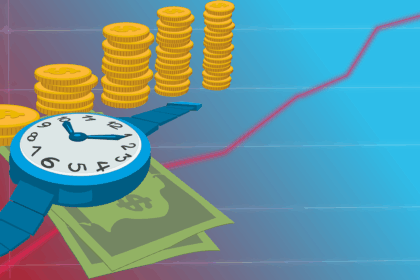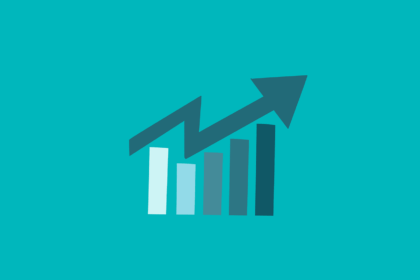Automated platforms simplify personal finance by combining tracking, budgeting, and forecasting in one place. Leveraging modern technology, these programs reduce manual input through synchronization with bank accounts and credit cards, ensuring real-time updates on spending habits.
Effective financial oversight requires more than just recording transactions–it demands insights generated by intelligent algorithms embedded within such solutions. These systems categorize expenses automatically, alert users to unusual activity, and even suggest saving opportunities based on individual behavior patterns.
The convenience of digital assistants extends beyond smartphones; desktop versions offer comprehensive dashboards that visualize cash flow trends over weeks or months. Utilizing cloud-based architecture guarantees data accessibility across devices while maintaining robust security protocols.
Integrating automation features, like bill reminders and goal tracking, enhances consistency in managing income versus expenditures. This structured approach fosters disciplined habits without overwhelming users who might find manual bookkeeping tedious or confusing at first.
Money management tools: apps and software
Utilizing digital solutions for financial tracking significantly enhances accuracy and efficiency in handling personal finances. Specialized applications equipped with automation features can categorize expenses, forecast budgets, and generate detailed reports without manual input. For example, software like YNAB (You Need A Budget) integrates bank synchronization to update transactions in real time, allowing users to maintain up-to-date records effortlessly.
Automation within these platforms reduces human error and saves time by performing routine calculations and reminders automatically. Technologies leveraging machine learning analyze spending patterns to offer tailored advice or detect anomalies that might indicate fraudulent activity. These capabilities are critical when managing diverse portfolios involving cryptocurrencies or multiple fiat accounts.
Technical features of financial monitoring solutions
The backbone of effective fiscal supervision lies in robust tracking modules that aggregate data from various sources such as bank accounts, credit cards, and investment portfolios. APIs (Application Programming Interfaces) facilitate secure data exchange between institutions and user interfaces, enabling seamless updates without compromising privacy. Advanced encryption standards ensure sensitive information remains protected during transmission.
Another important aspect is cross-platform compatibility; cloud-based systems allow synchronization across smartphones, tablets, and desktops. This ensures accessibility and consistency regardless of device. Some platforms incorporate blockchain technology to provide immutable transaction logs, enhancing transparency especially useful in cryptocurrency asset management.
- Expense categorization: Automated sorting helps visualize spending habits clearly.
- Budget forecasting: Predictive models assist in planning future expenditures based on historical trends.
- Alerts and notifications: Reminders for bill payments or unusual account activities prevent overdrafts and fraud.
Diving deeper into automation, rule-based engines trigger specific actions such as transferring funds between accounts when thresholds are met or suggesting adjustments to saving goals. Integration with tax reporting software further streamlines end-of-year processes by compiling necessary financial data accurately.
User experience benefits considerably from intuitive interfaces that simplify complex data into understandable graphs and summaries. Step-by-step tutorials embedded within many platforms guide beginners through setup processes like linking accounts securely or defining budget categories according to individual priorities. This approach builds confidence while promoting consistent usage habits essential for long-term financial discipline.
The implementation of such innovative technological solutions fosters greater control over personal finances by combining precision tracking with smart automation strategies. Whether managing traditional currencies or digital assets, adopting these systems empowers individuals with actionable insights derived from comprehensive data analysis–transforming abstract numbers into practical knowledge applicable daily.
Choosing Budgeting Applications for Beginners
For those new to financial organization, selecting the right budgeting platform begins with prioritizing simplicity and clarity in user interface. Many solutions on the market offer automated expense tracking that syncs directly with bank accounts, minimizing manual input and reducing errors. This feature is particularly valuable for novices as it provides real-time insights into spending habits without overwhelming complexity.
Integration capabilities are a key factor; choosing software compatible with multiple financial institutions enables comprehensive oversight of income and expenditures. For example, platforms utilizing open banking APIs facilitate seamless data aggregation, which supports accurate categorization and visualization of personal finances. Such interoperability enhances confidence in maintaining an up-to-date budget.
Core Features to Consider
Automation plays a significant role in effective fiscal supervision by simplifying routine tasks such as bill reminders and savings goals. Certain products employ machine learning algorithms to predict upcoming expenses based on historical trends, aiding users in proactive planning. This predictive functionality assists beginners in avoiding overdrafts or missed payments.
Tracking precision is another critical element; tools that offer detailed transaction tagging allow for granular analysis of spending patterns. Some applications provide customizable dashboards where users can set categories aligned with personal priorities–for instance, differentiating between fixed costs like rent versus variable ones like entertainment.
- Automated synchronization with bank accounts and credit cards
- Customizable category assignment for transactions
- Alerts for unusual activity or overspending
- User-friendly interfaces designed for non-experts
A practical approach involves starting with free or trial versions to assess how intuitive the system feels before committing financially. For instance, YNAB (You Need A Budget) offers structured tutorials alongside its software, guiding beginners through initial setup and ongoing adjustments. Similarly, Mint presents aggregated views that visually break down spending by category, facilitating understanding even without prior experience.
The adoption of these technologies fosters gradual skill development while ensuring accuracy in managing personal finances. Encouraging experimentation with different functionalities helps build familiarity with digital budgeting environments at a comfortable pace. Ultimately, this approach equips beginners to confidently maintain fiscal discipline supported by intelligent automation and clear visualization techniques.
Tracking expenses with mobile software
For effective expense tracking, selecting the right mobile application tailored to personal financial habits significantly enhances control over spending. Many platforms utilize synchronization with bank accounts and credit cards, automating transaction imports while categorizing expenses into customizable segments. This automation reduces manual input errors and provides real-time insights into cash flow dynamics. For instance, apps leveraging Open Banking APIs can securely fetch transactional data, enabling users to visualize their expenditure patterns immediately after purchases.
Beyond basic tracking, advanced programs incorporate machine learning algorithms that detect irregular spending or recurring subscriptions often overlooked by users. Such intelligence helps identify potential savings opportunities or fraudulent activity early on. A case study involving a popular budgeting tool demonstrated a 20% reduction in unnecessary subscriptions among its user base within three months by sending timely notifications and suggesting actionable steps through its interface.
Technical capabilities and integration
Modern digital expense trackers operate on multi-platform architectures supporting iOS, Android, and web interfaces to ensure seamless access across devices. These systems employ encrypted data storage and end-to-end encryption during transmission to safeguard sensitive financial information. Integration with blockchain wallets is emerging as a feature in some applications, allowing simultaneous monitoring of fiat currency alongside cryptocurrency holdings for comprehensive portfolio oversight.
The choice of software often depends on its compatibility with other financial instruments such as tax preparation services or investment platforms. Some solutions offer API endpoints enabling developers to customize functionality or extract detailed reports for further analysis. For example:
By leveraging these functionalities, individuals gain comprehensive visibility over their finances without extensive manual effort, encouraging disciplined saving behaviors supported by precise analytical feedback loops.
Automating Bill Payments Securely
To automate bill settlements securely, prioritize platforms that offer multi-factor authentication combined with end-to-end encryption. These features reduce risks of unauthorized access and data leaks during transaction processing. Platforms integrating tokenization for sensitive information storage further enhance protection by replacing actual data with non-sensitive equivalents.
Selecting solutions with real-time tracking capabilities ensures transparency in payment flows. Real-time alerts on scheduled transactions help identify discrepancies quickly, minimizing the chance of missed or duplicate payments. Opt for systems supporting encrypted API connections to service providers, ensuring data integrity throughout automated exchanges.
Technical Foundations of Automation Security
Automation relies heavily on secure communication protocols such as TLS 1.3, which safeguards data transfers from interception or tampering. Secure credential management through hardware security modules (HSMs) or trusted execution environments (TEEs) prevents exposure of login information within automation frameworks. Additionally, adaptive risk-based authentication dynamically adjusts verification requirements based on user behavior patterns and device context.
For example, a utility company integrated an automated payment platform employing OAuth 2.0 authorization alongside AES-256 encryption for stored credentials. This combination prevented unauthorized third-party access while enabling seamless recurring billing without manual intervention–demonstrating how layered security mechanisms bolster trustworthiness.
Effective use of digital ledger technology adds immutability to transaction records, providing verifiable audit trails for every automated payment executed. Blockchain-backed systems offer decentralized validation, reducing single points of failure and increasing resilience against fraud attempts targeting automated financial operations.
- Encryption standards (AES-256, RSA)
- Authentication protocols (OAuth 2.0, OpenID Connect)
- Secure APIs for third-party integration
- Tokenization for sensitive data
- Adaptive risk analysis engines
Implementing these technologies creates a robust framework where automation not only streamlines expense handling but also maintains confidentiality and integrity at every step.
Analyzing Spending Patterns Visually
Effective visualization of expenditure data significantly enhances the understanding of personal financial flows. Utilizing specialized programs designed for tracking expenses through graphical representations–such as pie charts, histograms, and time series plots–helps users identify recurring costs and irregular outlays swiftly. For example, automated categorization algorithms embedded in certain applications can segment expenditures into predefined groups like utilities, groceries, or entertainment, rendering complex datasets accessible and actionable.
Automation within these analytical platforms reduces manual input errors and streamlines data aggregation from multiple sources including bank accounts, credit cards, and even cryptocurrency wallets. The integration of APIs facilitates real-time synchronization with financial institutions, allowing continuous updates that reflect current spending trends. This technological synergy enables users to observe shifts in consumption habits promptly and adjust behavior accordingly.
Technical Features and Use Cases
Visualization systems often incorporate machine learning models to detect anomalies or unusual transactions by comparing historical spending patterns. For instance:
- Clustering techniques group similar expense entries to highlight predominant spending categories.
- Time-series analysis reveals seasonal variations or periodic spikes in expenditure.
- Heatmaps pinpoint days or weeks with unusually high transaction volumes.
An example includes a platform employing neural networks that adapt dynamically to user behavior changes over time, thus improving predictive accuracy for budget forecasting. These insights assist individuals in prioritizing savings goals while preventing overspending.
The advent of blockchain-based wallets introduces new dimensions for tracking decentralized currency movements visually. Certain platforms now support multi-currency dashboards where transactions on public ledgers are parsed and displayed alongside fiat expenses. This hybrid approach fosters comprehensive oversight across conventional banking and crypto holdings within a single interface.
User engagement increases when visualization frameworks offer customizable reports tailored to individual objectives–for example, setting alerts for exceeding category budgets or visual summaries highlighting investment versus consumption ratios monthly. By leveraging automation combined with intuitive graphical displays, these digital environments empower users to refine their financial strategies effectively without requiring advanced technical skills.
Conclusion: Integrating Investment Tracking Solutions
Integrating advanced tracking solutions into investment portfolios dramatically enhances precision in portfolio oversight and asset allocation. Leveraging automation within these systems reduces manual errors and accelerates response times to market fluctuations, allowing investors to optimize returns through real-time adjustments.
Emerging technologies such as blockchain-based ledgers and AI-driven analytics provide unprecedented transparency and predictive insights. For instance, decentralized finance (DeFi) platforms now offer APIs that seamlessly sync with proprietary trackers, enabling continuous synchronization of on-chain activities with off-chain performance metrics. This fusion of innovation facilitates a holistic view of asset distribution across multiple channels.
Future Implications and Recommendations
- Automation Integration: Incorporate event-driven triggers that execute portfolio rebalancing automatically based on predefined risk parameters, minimizing latency between signal detection and action.
- Cross-Platform Synchronization: Utilize interoperable standards like Open Finance APIs to aggregate data from varied custodians, wallets, and exchanges for unified reporting.
- Advanced Analytics: Deploy machine learning models to detect anomalous patterns or predict downturns by analyzing historical trends combined with social sentiment indexes.
- User-Centric Interfaces: Design intuitive dashboards that translate complex data streams into digestible visualizations, empowering users with actionable intelligence without overwhelming technical jargon.
The trajectory of these monitoring innovations points toward increasingly autonomous ecosystems where capital flows are tracked seamlessly across traditional and crypto-assets alike. Adopting such integrative frameworks today equips investors with the agility needed to thrive amid dynamic market conditions while maintaining comprehensive oversight through scalable technological infrastructures.





